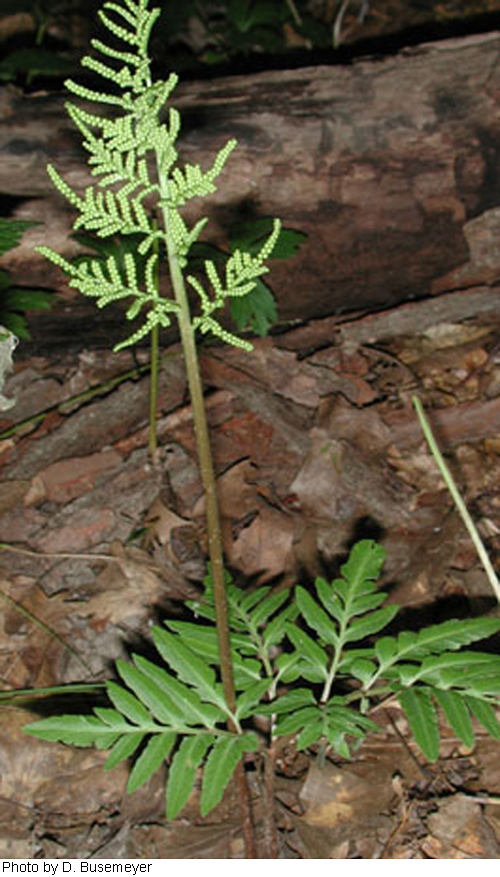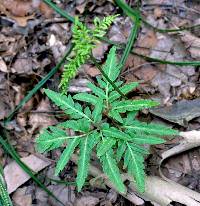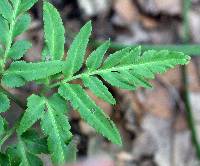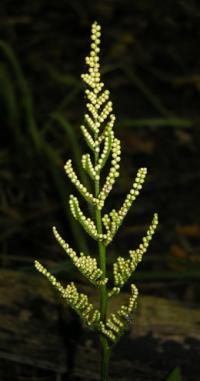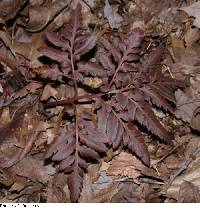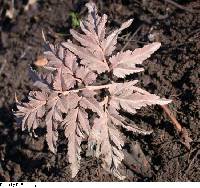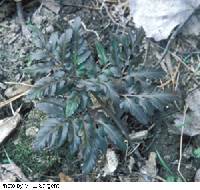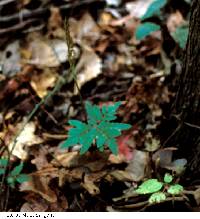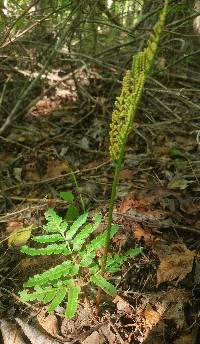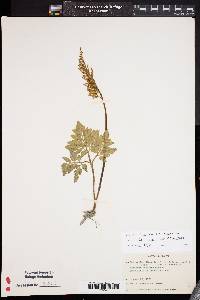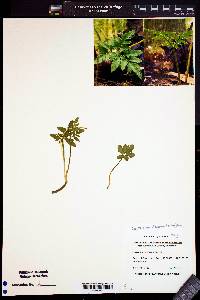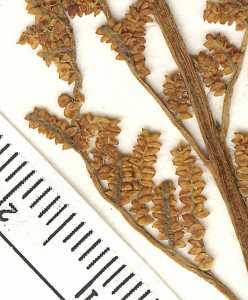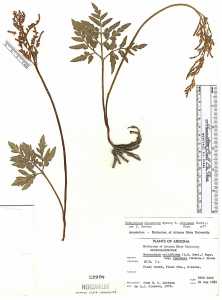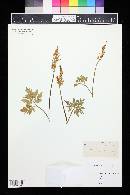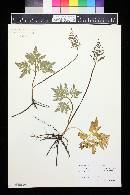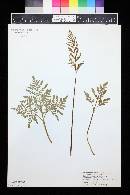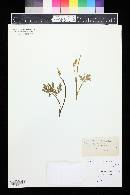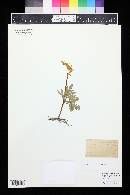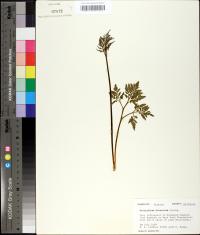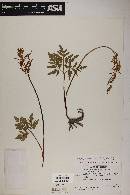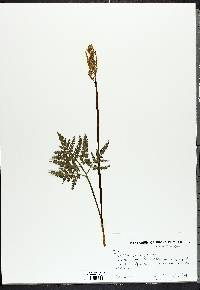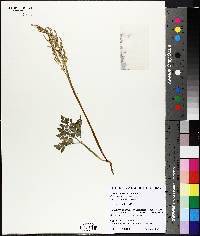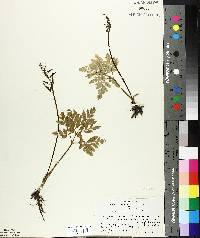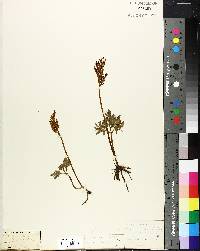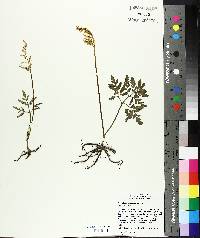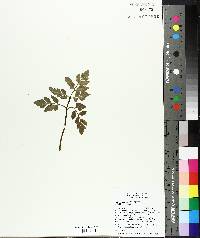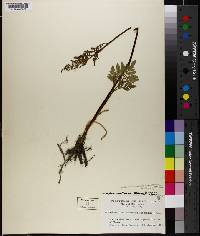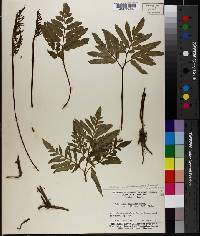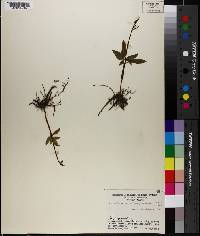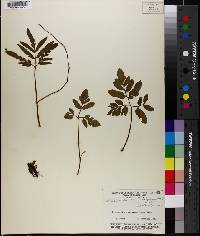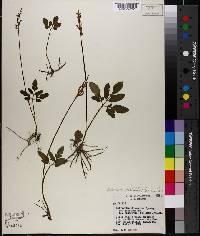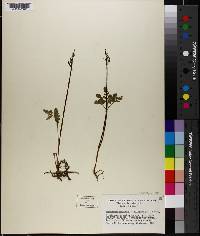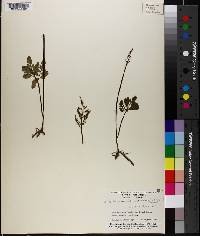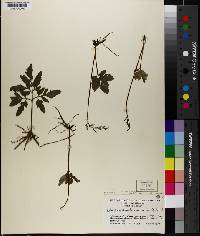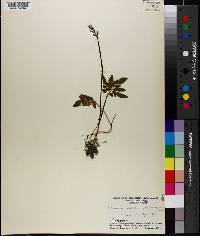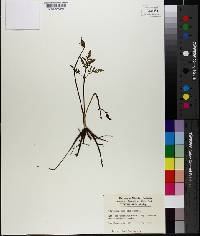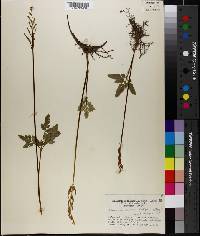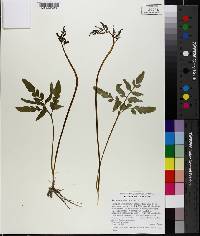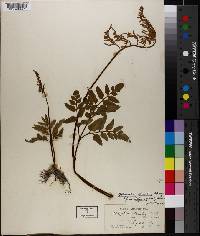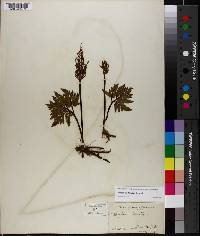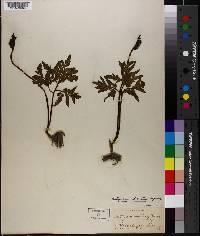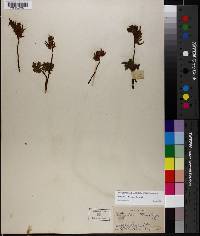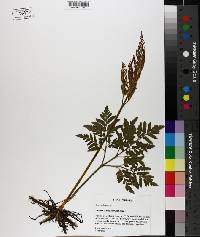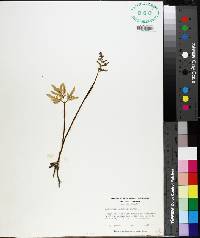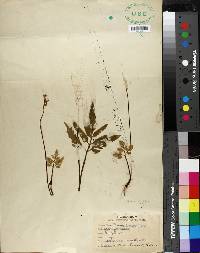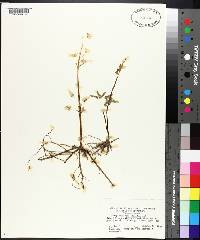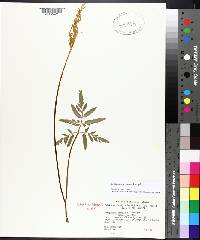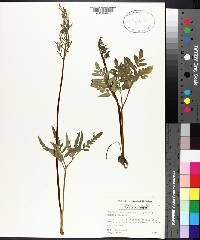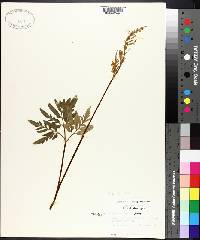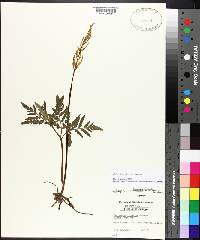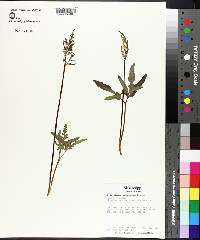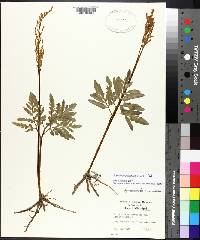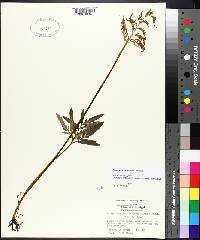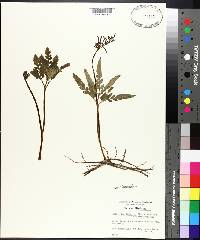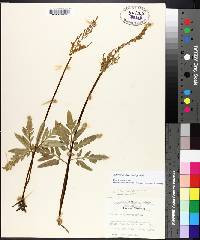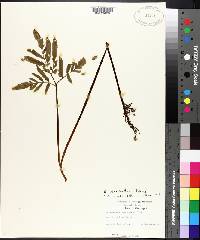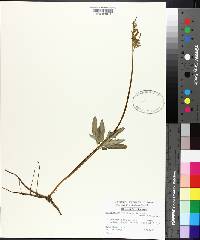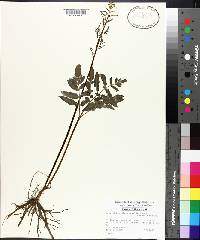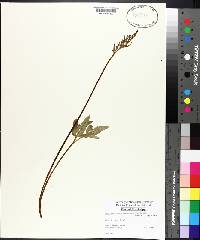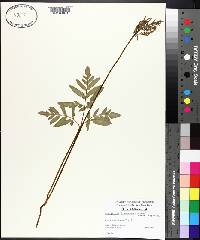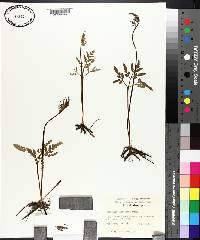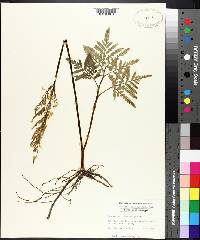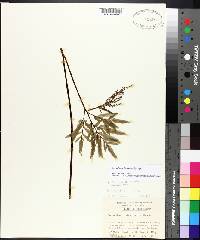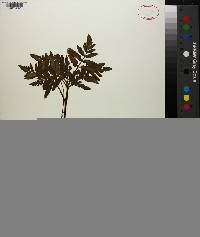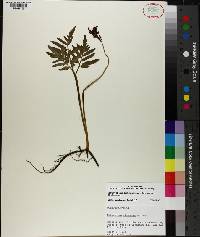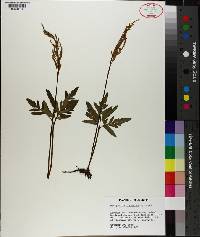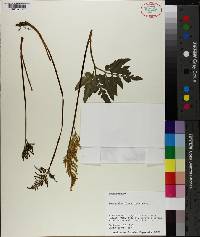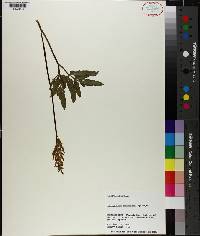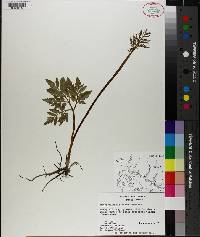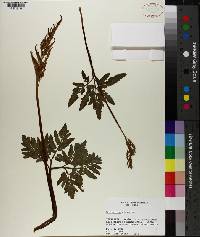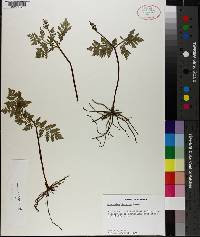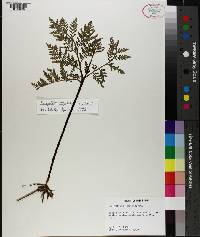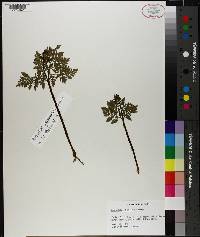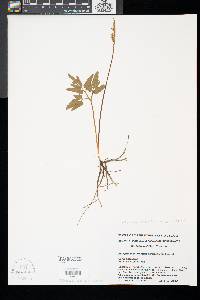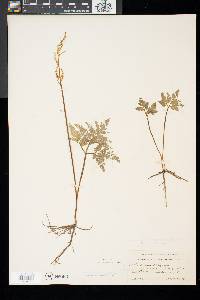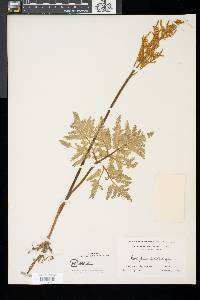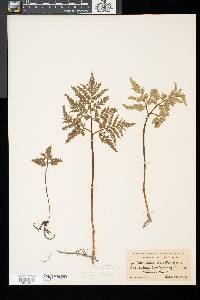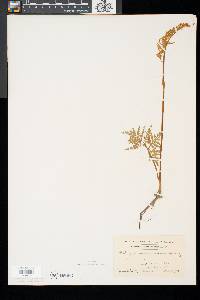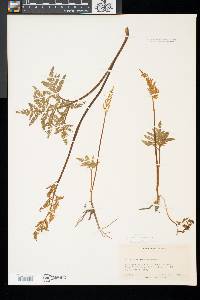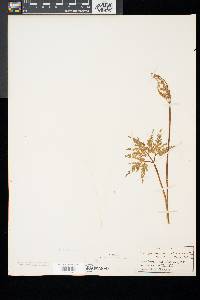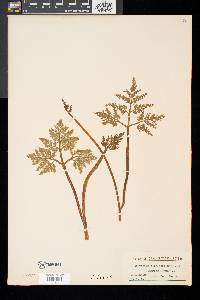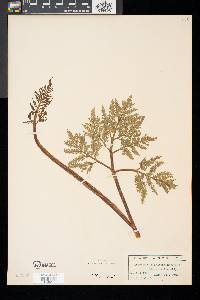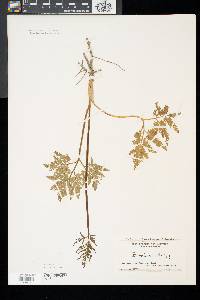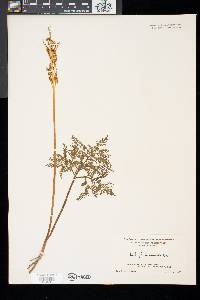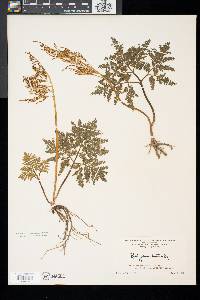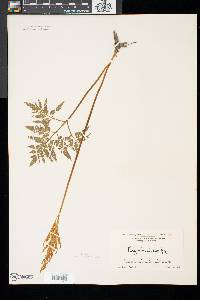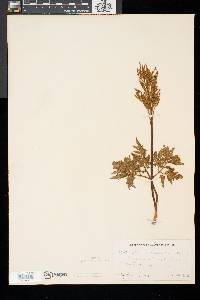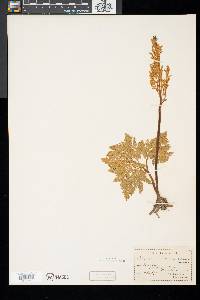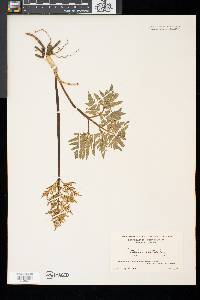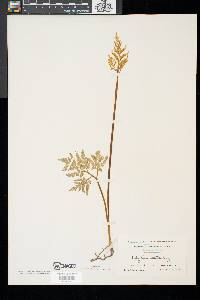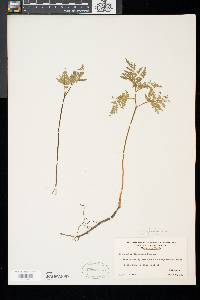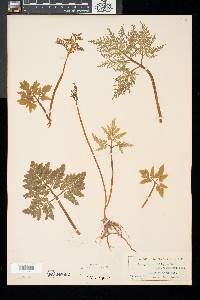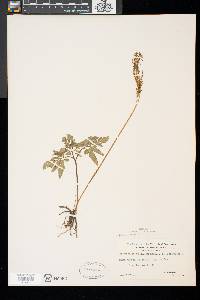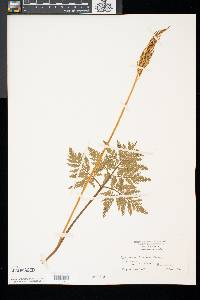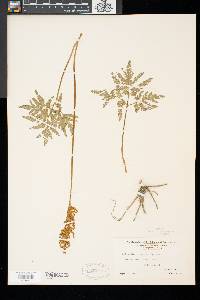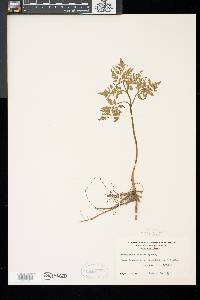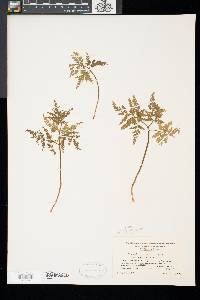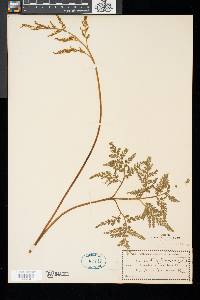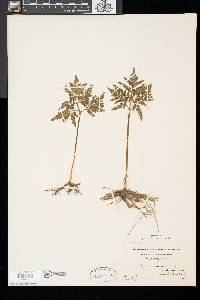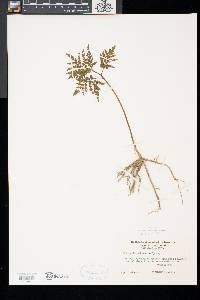
|
|
|
|
Family: Ophioglossaceae
Cut-Leaf Grape Fern, more...dissected grapefern, cutleaf grapefern
[Botrychium dissectum Spreng., moreBotrychium dissectum dissectum , Botrychium dissectum f. confusum (Wherry) E. A. Barthol., Botrychium dissectum f. dissectum , Botrychium dissectum f. elongatum (Gilbert & Haberer) Weath., Botrychium dissectum var. dissectum , Botrychium dissectum var. obliquum (Muhl.) Clute, Botrychium dissectum var. oblongifolium , Botrychium lunarioides var. dissectum (Spreng.) A. Gray, Botrychium lunarioides var. obliquum (Muhl.) A. Gray, Botrychium obliquum Muhl, Botrychium obliquum f. confusum Wherry, Botrychium obliquum var. dissectum (Spreng.) Prantl, Botrychium obliquum var. elongatum Gilb. & Haberer, Botrychium obliquum var. intermedium Underw., Botrychium obliquum var. pennsylvanicum E. W. Graves, Botrychium ternatum var. dissectum (Spreng.) D. C. Eaton, Botrychium ternatum var. obliquum , Sceptridium dissectum var. obliquum (Muhl. ex Willd.) Mohlenbr., Sceptridium obliquum (Muhl.) Lyon] |
Trophophore stalk 3--15 cm, 1.5--2.5 times length of trophophore rachis; blade shiny green, often bronze in winter, plane to convex, 3--4-pinnate, to 20 × 30cm, leathery. Pinnae to 10 pairs, approximate to remote, slightly ascending, distance between 1st and 2d pinnae not or slightly more than between 2d and 3d pairs, undivided except in proximal 2/3--3/4. Pinnules usually obliquely angular--trowel-shaped to widely trowel-shaped to obliquely round-lanceolate to ovate and pointed, margins denticulate to lacerate to coarsely cut halfway or wholly into linear-divergent segments in some populations, venation pinnate. Sporophores 2--3-pinnate, 1.5--2.5 times length of trophophore. 2 n =90. Leaves green over winter, new leaves appearing in late spring. In variety of habitats, open grassy areas to deep forest; 0--1500 m; N.B., N.S., Ont., Que.; Ala., Ark., Conn., Del., D.C., Fla., Ga., Ill., Ind., Iowa, Kans., Ky., La., Maine, Md., Mass., Mich., Miss., Mo., N.H., N.J., N.Y., N.C., Ohio, Pa., R.I., S.C., Tenn., Tex., Vt., Va., W.Va., Wis.; West Indies in the Antilles. Botrychium dissectum is highly variable, even within the same population. In Florida and along the Gulf Coast, the extremely lacerate form is absent, and the blade segments are usually strongly angular, trowel-shaped, and dentate. In eastern Kentucky and central Tennessee in forested valleys, on shale and limestone soils, plants have narrowly linear, somewhat blunt-tipped segments with a more or less whitish gray central line above the veins. This variant, which grows with B . dissectum , may deserve recognition as a distinct species.
Perennial fern 10 - 75 cm tall Stem: single, upright, very short and inconspicuous, up to 5 mm in diameter with a thickened base (caudex). Spores: thousands per sac, all of one kind, three-sectioned (trilete), thick-walled, and with a bumpy or pimply surface. The spores give rise to the gametophyte (the sexual phase of the plant), which is broadly egg-shaped, unbranched, tiny (1 - 3 mm tall, 1 - 10 mm diameter), fleshy, not green, underground, saprophytic, and inhabited by symbiotic fungi (mycorrhizae). Leaf: one per stem, on stalk arising from an expanded, clasping base, which forms a closed sheath around stem apex. The single leaf is made up of two parts arising from a shared stalk: a sterile, green, expanded blade portion (trophophore); and a fertile, stalk-like, spore-bearing portion (sporophore). Leaves appear in late spring and usually turn bronze over winter. Roots: up to ten per plant, blackish, 1 - 4 mm in diameter, and originating 1 cm below the base of the plant. Similar species: Botrychium dissectum is probably most similar to B. oneidense, but in that species the sterile blade (trophophore) remains green even in winter, and the final divisions (pinnules) of the trophophore are more egg-shaped, and never narrow with finely cut edges, thus the trophophore never appears finely dissected. Botrychium rugulosum may appear similar as well, but that species has very wrinkled final divisions on the trophophore blade, and the terminal pinnules are very similar in size to the lateral pinnules. Also very similar is B. multifidum, but the trophophore of that species also has the terminal pinnules only slightly larger than the lateral pinnules, and the pinnules are almost non-toothed. Possibly somewhat similar is B. virginianum, but that species has the sterile portion of the leaf (trophophore) stalkless at the the base of the fertile portion (sporophore), which is at least midway up the shared main stalk. Our other species have trophophore blades that are distinctly longer than wide. Habitat and ecology: Occasional, usually in wooded areas. Occurence in the Chicago region: native Notes: This is a highly variable species that can show differences in trophophore blade morphology even within a single population. Author: The Field Museum Plants 10-30+ cm; bud pilose, its blade and sporophore reflexed; blade inframedial or nearly basal on an evident 3-7 cm stalk, somewhat coriaceous, persistent, often reddish when first expanding and tending to turn bronzy in autumn, mostly 3-4 times pinnate but highly variable, sometimes finely divided throughout, more often unequally dissected with the terminal segment of the principal divisions tending to be more elongate and less divided than the other segments; primary and secondary segments often crowded; ultimate segments mostly acute or acuminate, but with rounded or subtruncate base; fertile spike 2-10 cm, long-stalked; 2n=90. In a wide range of habitats; N.S. and N.B. to Wis. and se. Minn., s. to Fla. and La. Aug.-Nov. (B. d. var. obliquum, the more common phase with less strongly dissected lvs) Gleason, Henry A. & Cronquist, Arthur J. 1991. Manual of vascular plants of northeastern United States and adjacent Canada. lxxv + 910 pp. ©The New York Botanical Garden. All rights reserved. Used by permission. From Flora of Indiana (1940) by Charles C. Deam Local throughout the state in either dry or moist soils. All of my specimens are from woodland; some are from white oak woods, some are from beech and sugar maple woods, and one specimen was found associated with sweet gum and white elm. [Variety obliquum is] infrequent throughout the state in wet or dry woodland. Most of my specimens were found in low, flat woods associated with sweet gum and beech, and a few were found in dry woodland with beech and sugar maple. A form with less divided and oblong pinnae has been described by E. W. Graves (Amer. Fern Jour. 22: 50-52. 1932) as Botrychium obliquum var. oblongifolium. Graves named one of my specimens from Marion County and one from Crawford County as belonging to this variety. Since fern students are not agreed upon the status of this fern, I record the data without comment. I have a specimen of variety "tenuifolia' collected in a low woods about 3 miles northwest of Leavenworth, Crawford County, which is referred to this variety by both R. T. Clausen and E. T. Wherry. This variety is found chiefly in the southern states. …… Indiana Coefficient of Conservatism: C = 3 Wetland Indicator Status: FAC |
|
|
|

